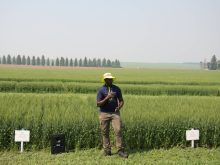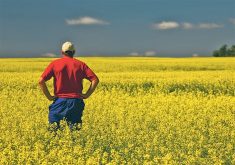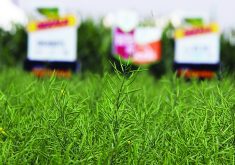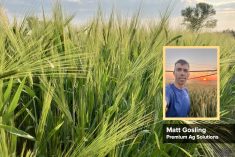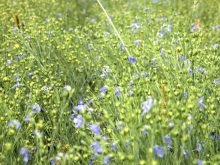Hindsight has its benefits, but foresight, when it comes to weather and crops, would be even better for farmers.
That’s hard to come by, said Dan Heaney of Farmers Edge, but existing weather data does have plenty of information on probability, and that can pay off.
He told those at Agronomy Update in Lethbridge Jan. 17 that “field-centric” data, weather information about conditions in a specific field, is becoming a more viable option. Weather station density and extremely localized data can help farmers make better decisions about such things as spraying and irrigation.
Read Also

Feds propose overhaul of chronic wasting disease control program
Chronic Wasting disease control program getting updated by Canadian Food Inspection Agency with feedback encouraged from producers.
“What I am suggesting to you is that getting your farm on a localized weather network, that you can then combine with the longer-term data from systems like the Alberta Climate Information System (ACIS), I think, can give you some real advantages in understanding weather during the growing season,” said Heaney.
ACIS has about 350 weather stations in the province that constantly collect data and its website has weather information dating back to 1961.
Through the ACIS website, users can see previous weather patterns and consider probabilities, although as Alberta Agriculture meteorological expert Ralph Wright told farmers, there is no bankable pattern in past years’ weather.
Heaney noted that although ACIS has a dense network of stations by most weather standards, sometimes those stations are far from a field where the farmer wants the data.
“Just distance alone away from the station, the accuracy starts to fall off fairly quickly,” he said.
He pointed to hyperlocal data as the next wave of weather intelligence. Modern farm equipment and networks are capable of collecting weather information and processing it in the context of seed variety and fertilizer rates to give farmers good analytics.
“Going to a more localized … weather data system, I think, is a real advantage, especially in Alberta where we also have access to the kind of good, really high quality long-term data” like ACIS, said Heaney.
In the short-term, such data can be used to decide whether to spray on a certain day.
Longer term, Heaney said it can be used to predict crop growth stage using growing degree day data, allowing logistical management.
He used the example of spring wheat and fusarium. The disease has a narrow window for infection and the risk is weather dependent.
By knowing the likely short-term levels of humidity and precipitation, plus growth stage of the crop, farmers could calculate the risk of a fusarium outbreak and the likelihood of getting an economic response if they do spray.
Heaney said big data now being collected from farms will become much cheaper, and be available on tighter time frames, when about 500 new satellites are launched within the next three to five years.
That will allow systems to combine satellite-collected vegetation data and combine it with seeding dates to get a mid-season yield forecast and other data on a field-by-field basis.
“The more field-centric the weather, the more useful the data is,” he said. “You can’t manage the weather but the more you know about the weather, the better you can manage.”
Wright said the ACIS system has about 20,000 maps available, showing various aspects of provincial weather data. Weather station data on the site is generally about two hours old and its radar capability allows users to track storm systems.
The site can be found at agriculture.alberta.ca/acis.




